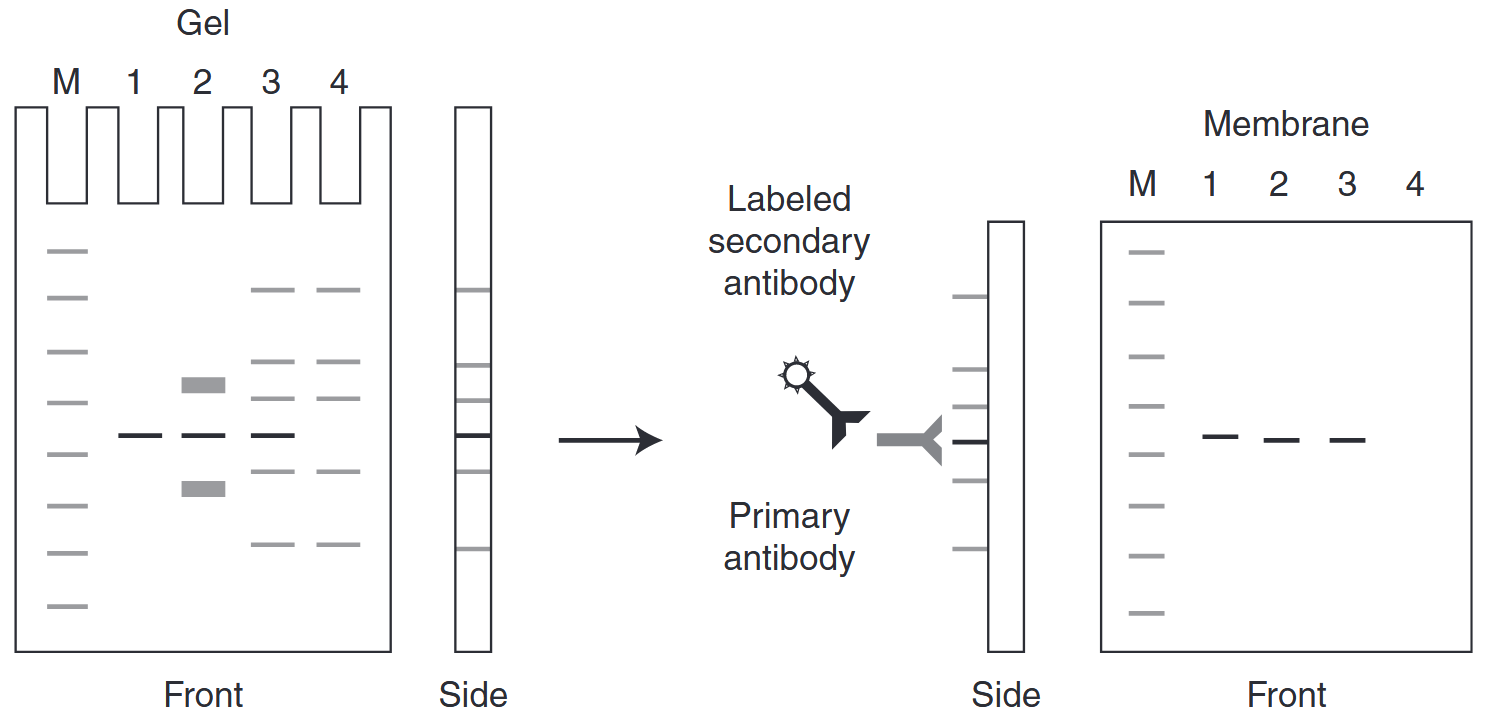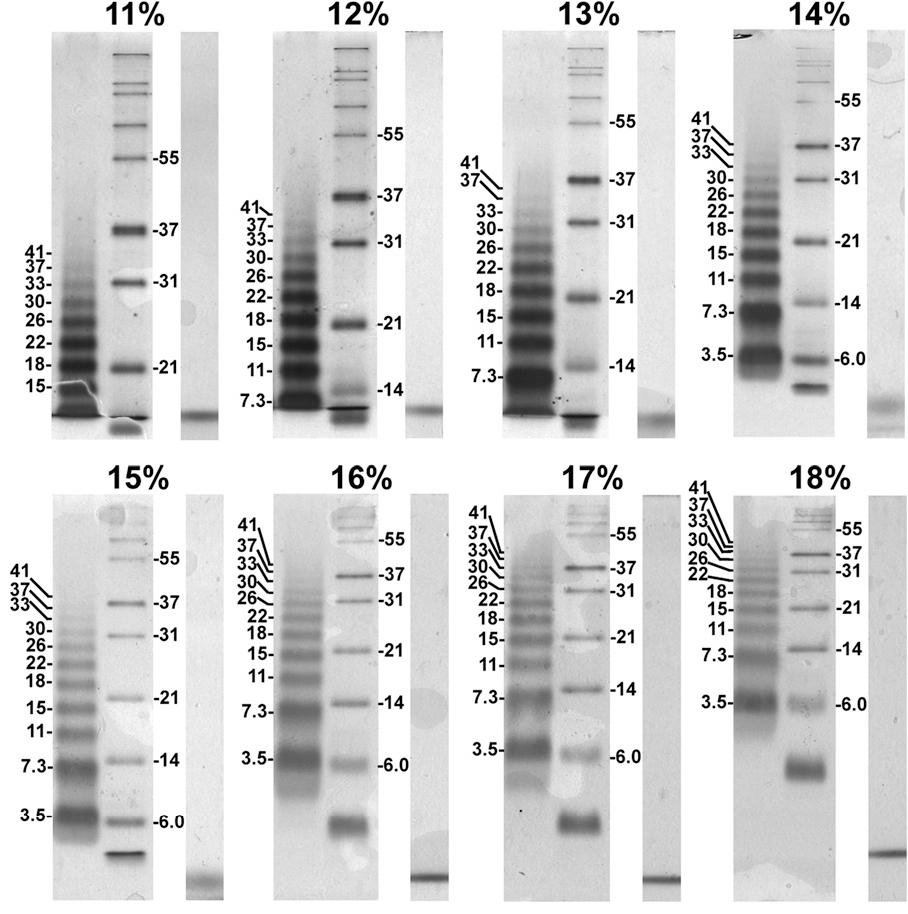Immunoblotting Analysis Service
- Low-concentration gels (e.g., 5%): Ideal for proteins greater than 200 kDa.
- Medium-concentration gels (e.g., 10%-12%): Typically used for proteins ranging from 25 to 200 kDa.
- High-concentration gels (e.g., 15% or higher): Suitable for proteins smaller than 25 kDa.
- PVDF membrane: Suitable for high molecular weight proteins (>40 kDa), with strong binding and stable signal output.
- NC membrane: Ideal for low molecular weight proteins (<40 kDa), offering clean backgrounds and cost-effectiveness.
- Primary antibody selection: Monoclonal antibodies are chosen for high specificity, whereas polyclonal antibodies offer greater sensitivity, useful for detecting low-abundance proteins.
- Secondary antibody labeling: We offer HRP or fluorescent-labeled secondary antibodies for chemiluminescence or fluorescence-based detection.
- Chemiluminescence: Offers high sensitivity for detecting low-abundance proteins.
- Fluorescence: Allows for multiplex detection, enabling the simultaneous analysis of multiple proteins.
- Optimized Experimental Design: We customize the electrophoresis, transfer, and antibody incubation parameters to ensure reliability and reproducibility.
- Flexible Detection Methods: We offer both chemiluminescence and fluorescence detection, adapting to different research needs.
- Extensive Antibody Resources: We provide a variety of monoclonal and polyclonal antibodies, as well as antibody options from different hosts, to meet diverse experimental requirements.
- Professional Technical Support: Our experienced team provides full-service support from design to data interpretation, ensuring efficient workflow.
- Sample Types: Cell lysates, tissue extracts, or purified proteins.
- Sample Quantity: We recommend ≥20 μg per lane; larger quantities may be needed for low-abundance proteins.
- Other Requirements: Clients are encouraged to provide primary antibody and related documentation. If assistance is needed in selecting an antibody, we are happy to offer professional recommendations.
Immunoblotting analysis (also known as Western Blot) is a classical protein detection technique that combines specific antibody recognition with sensitive signal detection methods. This approach allows for both qualitative and quantitative analysis of target protein expression and post-translational modifications (PTMs). With its high sensitivity and specificity, immunoblotting analysis remains indispensable in proteomics, signaling pathway studies, and disease mechanism research. MtoZ Biolabs delivers accurate and reproducible immunoblotting analysis service that leverage advanced platforms, scientifically designed workflows, and extensive expertise to empower your research with reliable data.
Technical Principles
Immunoblotting analysis combines the protein separation ability of SDS-PAGE electrophoresis with the specificity of antibody-antigen binding. This allows for efficient detection of target proteins within complex biological samples. Initially, proteins are separated by SDS-PAGE according to their molecular weight, and then transferred onto PVDF or NC membranes using wet or dry transfer methods. Specific antibodies are used to bind the target protein, and signal detection is achieved via chemiluminescence or fluorescence amplification systems, enabling visualization and quantitative analysis.

Litovchick, L. Cold Spring Harb. Protoc. 2020.
Figure 1. The Principle of Immunoblotting Analysis
Analysis Workflow
MtoZ Biolabs' immunoblotting analysis service is built on scientific rigor. With optimized experimental designs and a high-precision technical platform, we provide end-to-end, reproducible solutions from sample preparation to data analysis, addressing a wide range of research needs.
1. Sample Processing and Protein Loading
Cell lysates, tissue extracts, or purified protein samples provided by clients are quality-checked and normalized for concentration to meet experimental requirements. We recommend loading 20–30 μg of total protein per lane, but for low-abundance proteins, adjustments can be made to improve signal sensitivity. We also offer protein denaturation treatments to ensure that proteins are fully unfolded during electrophoresis, which is critical for accurate molecular weight separation.
2. SDS-PAGE Electrophoresis and Gel Selection
The appropriate gel concentration is selected based on the molecular weight range of the target protein. Higher concentrations of gel are ideal for small proteins, while lower concentrations are better suited for larger proteins:
MtoZ Biolabs optimizes the electrophoresis conditions for the target protein to ensure clear and accurate separation, laying the foundation for successful transfer and detection.

Rath, A. et al. PNAS. 2013.
Figure 2. SDS-PAGE Gels of Different Concentrations
3. Protein Transfer and Membrane Selection
The efficiency of protein transfer from the gel to the membrane plays a critical role in detection outcomes. MtoZ Biolabs selects the appropriate transfer method and membrane type based on protein size:
Transfer is conducted using either wet or dry systems, with optimized parameters (voltage, time, buffer composition) to ensure efficient protein transfer while maintaining protein integrity.
4. Antibody Incubation and Signal Detection
The antibody incubation step is pivotal to the success of immunoblotting analysis:
During incubation, factors such as antibody dilution, temperature, and time are optimized to ensure strong signals and minimal background. Blocking agents (e.g., 5% milk or BSA) are used to reduce non-specific binding.
5. Detection and Imaging
Multiple signal detection methods are available:
Advanced imaging equipment is used to capture protein bands with high resolution, providing accurate quantitative data.
6. Data Analysis and Reporting
As part of our immunoblotting analysis service, we provide comprehensive data analysis, including protein band quantification, control comparisons, and optimization of experimental conditions. A detailed report is delivered, offering insights into protein expression levels, post-translational modifications, and key scientific interpretations to support your research goals.
Why Choose MtoZ Biolabs?
Our immunoblotting analysis service offers a comprehensive and customized approach to protein analysis, ensuring high-quality, reproducible results tailored to your specific research needs. With our advanced technology and expertise, we provide end-to-end support throughout your experimental process.
Sample Submission Suggestions
Applications
MtoZ Biolabs' immunoblotting analysis service is widely used for quantifying protein expression, analyzing post-translational modifications, and investigating key nodes in signaling pathways. They are also valuable for antibody specificity validation, optimizing research for disease mechanisms, and drug development.
MtoZ Biolabs, an integrated Chromatography and Mass Spectrometry (MS) Services Provider, provides advanced proteomics, metabolomics, and biopharmaceutical analysis services to researchers in biochemistry, biotechnology, and biopharmaceutical fields. Our immunoblotting analysis service is designed to deliver rapid, high-throughput, and cost-effective analysis while ensuring exceptional data quality and minimal sample consumption. Free project evaluation, welcome to learn more details!
MtoZ Biolabs, an integrated chromatography and mass spectrometry (MS) services provider.
Related Services
Two-Dimensional Gel Electrophoresis Service
How to order?







